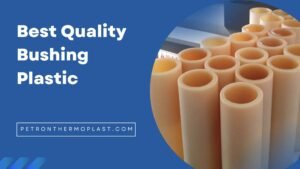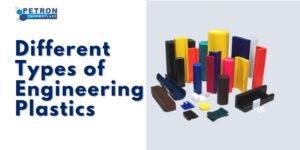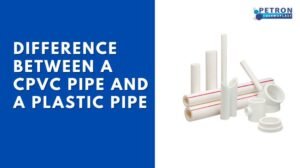Some Basic Informations About CPVC Non Return Valve
Check valves, non-return valves, and one-way valves only permit one-way passage of liquid or air. Manufacturers produce them in a broad variety of shapes and sizes. They are used in a huge range of applications to stop expensive or even harmful backflow. Even though check valves are used in many commonplace applications, the fundamentals of how they work are sometimes unclear. I’ll quickly go through the fundamentals of CPVC Non Return Valve operation in this post. I also describe some of the most popular small check valve types used to control gas and liquid flow.
Some check valve basics
Check valves frequently have two apertures in the valve body and are called two-port valves. The valve has two ports: an inlet port where media enters the valve and an outlet port where media exits (referred to as the exit port). Check valves don’t have a valve handle or stem since they don’t need an external control to function.
Many different materials and configurations are available for miniature, small-bore, and compact check valves. It is difficult to generalize about their designs since they are a little more intricate than bigger industrial check valves. Almost every fitting we sell can have a check valve added because of Petron’s unique ability. But all check valves often have the same useful qualities.
Normally open or normally closed
Small-bore, compact, and miniature check valves differ primarily in two ways from one other in design. Check valve designs prevent backflow through the CPVC Non Return Valve by using a free-floating valve sealing element. In order to halt the flow, backflow pressure moves the sealing element and forces it back up against the valve seat or sealing surface. Since these check valves are regarded as free-flowing, closing them calls for at least some backflow pressure. They are frequently referred to as normally open check valves as a result.
In the other principal check valve type, the sealing part of the valve is pushed against the valve seat or sealing surface by a source of pressure, often a spring or flexing elastomer. These valves are frequently referred to as “normally closed check valves” since they must have at least some downstream pressure in order to open. “Check valve cracking pressure” is the positive downstream pressure needed to open a check valve and generate at least some detectable flow.
All check valves must have at least a little amount of downstream flow in order to completely open and allow the maximum amount of flow through the valve. While the pressure differential across the valve influences the maximum flow rate, check valves typically need adequate pressure from downstream flow to fully open and permit the maximum flow to pass through the valve.
Cracking pressure
A critical requirement for normally-closed check valves is the cracking pressure. The minimal upstream pressure is required for a usually closed check valve to open and allow flow to commence. Even with exact but extremely low breaking pressures, it is still feasible to design precise spring pressures to create tiny check valves.
Find out more about the significance of check valve cracking pressure as a check valve standard.
Basic Types Of Miniature Or Small-Bore Check Valves
A tiny check valve is often positioned in line with the orientation required for a flow control application. There are three different types of little CPVC Non Return Valve.
- Duckbill
- Diaphragm
- Spring loaded or spring assist
3 Common Problems in Check Valve Selection
Did you know that check valves continue to function even if a facility loses air, electricity, personnel, or all of the above? They are available in a huge range of sizes, materials, and end connectors and have many uses. Why then are they frequently chosen or proportioned incorrectly? It’s because the effectiveness of check valves depends on how they’re used. Frequently, applications and other variables rather than the check valve itself are to blame for difficulties with the valve. Therefore, bear in mind the following three typical issues while repairing difficulties or changing a check valve:
Water Hammer
One of the most typical check valve issues is the water hammer. A water hammer is a pressure spike that happens when a liquid or gas is abruptly forced to stop or change direction. This frequently happens when a valve at the end of a pipeline system is unexpectedly closed. This may cause noise and vibration, which may result in damage and raise the cost of upkeep or repairs. However, a water hammer may be avoided by utilizing a check valve that closes more quickly, which prevents pressure spikes and shock waves from damaging and rupturing equipment. Particularly our quiet CPVC Non Return Valve is renowned for its efficiency in reducing or even completely eliminating water hammers.
Reverse Flow
Another frequent check valve issue is reverse flow, which may be quite expensive, especially when it happens at a pump’s outlet and causes the pump to spin counterclockwise. The solution to this issue is a quick-closing, tightly shut-off valve, which the correct in-line check valve with spring assistance will provide while also preventing reverse flow.
Oversizing
It’s likely that oversizing is to blame if there is a lot of valve chatter—repeatedly opening and closing the valve. To keep in mind, check valves should be sized for the application rather than the line size. There should be no repetitive fluttering and, as a result, no early failure if the disc is stable against the internal stop in the open position or fully closed.
Why Should We Use Different Types Of Non Return Valves?
Non-return valves exist in a variety of sizes and forms, but they are typically tiny and affordable. Pumps and compressor equipment are protected from damage by NRVs. These could be the outcome of backflow or reverse flow. Incompatible valves can bring on production loss and downtime. The use of NRVs can assist in mitigating these effects. Non-return valves also have the advantages of conserving energy and lowering maintenance and valve failure costs. Therefore, it should come as no surprise that non-return valves are very common in the business.
Which NRV kind have you seen or utilized more frequently? Do we still need to add any NRVs to our list? Tell us in the comments section below. Do you still have unanswered queries concerning CPVC Non Return Valve types? Simply register at Linquip and contact us with any queries or uncertainties you may have.
If you choose the correct check valve for your application and keep these frequent issues in mind, your check valves will last longer and perform better in your applications. Please visit the website of Petron Thermoplast now!




